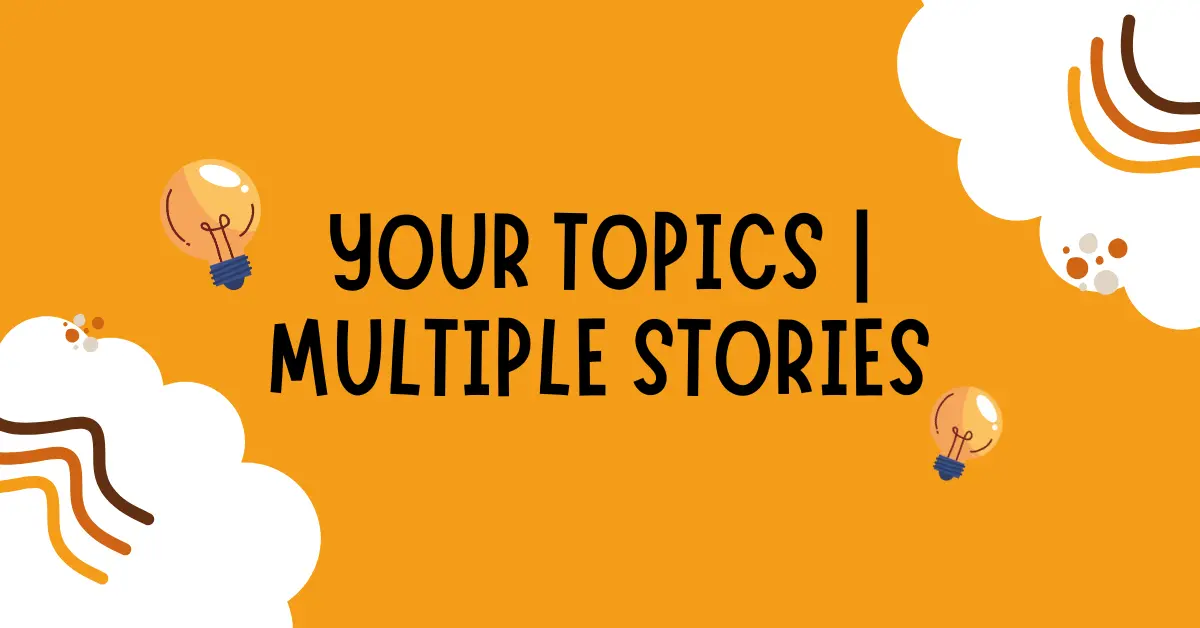Every great idea begins with a spark but what if that single spark could ignite a thousand fires? In today’s ever-evolving creative space content creators, storytellers, students and marketers are all faced with one beautiful challenge: How do I make this topic matter to more people? That’s where the power of Your Topics Multiple Stories comes alive. It’s not just a phrase — it’s a method. A mindset. A tool. A storytelling revolution that teaches us how one idea can be transformed into many meaningful narratives each resonating with a different emotion, audience or purpose.
What is “Your Topics | Multiple Stories”?
The phrase represents a creative strategy and possibly a feature of tools or educational platforms where users input a topic and receive various story ideas, outlines, or versions.
It’s ideal for:
- Writers wanting to explore different angles.
- Educators assigning multi-perspective essays.
- SEO writers building topical clusters.
- Marketers repurposing content into different formats.
- AI tools generating story variations for content ideation.
The Hidden Superpower in Every Topic
Let’s get this straight — you don’t need more ideas; you need more versions of your best ones. The key lies in knowing how to reimagine a single topic from different angles. For example if your topic is online learning you can turn it into:
- A personal memoir: “How Online Classes Changed My Life”
- A guide: “Top 10 Platforms for Online Learning in 2025”
- An opinion piece: “Why Online Learning is Failing Some Students”
- A data story: “The Growth of E-Learning: Stats That Will Surprise You”
Each is a unique story. Same topic. Different lenses. Infinite potential.
Why You Should Tell Multiple Stories from One Topic
Whether you’re a writer, blogger, YouTuber or entrepreneur this approach offers serious benefits:
- SEO Advantage: Google loves depth. Multiple stories around a topic boost topical relevance and internal linking
- Audience Reach: Different people connect with different types of stories — emotional, analytical, humorous etc
- Creative Growth: It challenges your thinking and sharpens your storytelling muscle
- Marketing Efficiency: One idea becomes 5+ content pieces across platforms — blog, email, video, social
Framework: How to Multiply Your Stories from One Topic
Use this proven 4-Pillar Framework to get the most from your topic
1. Angle Shift
Change the perspective:
- From your own voice (personal experience)
- From a customer’s point of view (testimonial)
- From a critic (opinion-based)
- From data (research-backed)
2. Format Flip
Use multiple formats:
- Blog post
- Twitter thread
- YouTube script
- Podcast episode
- Infographic
3. Tone Variation
Speak differently:
- Serious
- Humorous
- Inspirational
- Educational
4. Audience Segmentation
Create versions for:
- Beginners
- Experts
- Niche groups (e.g. parents, students, designers)
Real-World Examples: One Topic Many Stories
Let’s look at some quick case studies:
Topic: Time Management
- “How I Plan My Day as a Freelance Writer” (relatable + personal)
- “Top 7 Time-Tracking Apps in 2025” (informational + tool-based)
- “Why Hustle Culture is Toxic” (opinion + controversial)
- “Time Management Techniques from CEOs” (inspirational + data-driven)
Topic: Gaming Addiction
- “I Lost a Year to Gaming – My Story” (emotional narrative)
- “The Psychology Behind Video Game Addiction” (scientific + deep dive)
- “5 Ways to Help a Teen with Screen Obsession” (practical + helpful)
Using AI and Tools to Expand Your Topic
Not sure how to stretch a topic into multiple stories? Use these:
- ChatGPT: Ask for “10 story ideas from [your topic]”
- AnswerThePublic: See real user questions for topic expansion
- Google’s ‘People Also Ask’: Great for building story angles
- Mind Mapping Tools: Helps you visually branch out sub-topics
Where to Use Your Topic | Multiple Stories
This storytelling method isn’t just for writers. Here’s how you can use it across industries:
| Role/Industry | Application |
|---|---|
| SEO Blogger | Create content clusters and pillar pages |
| YouTuber | Turn each story into a separate video |
| Brand Marketer | Build email campaigns and ad variations |
| Teacher | Design student projects with different viewpoints |
| Author | Intertwine narratives in a novel or short story collection |
Mistakes to Avoid When Writing Multiple Stories
- Repetition – Don’t just reword the same content
- Over-complexity – Keep each version clear and targeted
- Lack of cohesion – Tie all stories back to a unifying theme or purpose
- Neglecting audience – Know who each story is for
Future of Storytelling: Personal Multiplied and Tech-Driven
The future isn’t about creating more random content — it’s about creating strategic multi-dimensional narratives around what matters most. With AI VR interactive media and transmedia storytelling a single idea can live across dozens of experiences. Whether you’re a solo creator or building a brand learning how to craft multiple stories from one core idea is your ticket to visibility engagement and impact.
Conclusion: One Topic Infinite Impact
You don’t need hundreds of topics to tell great stories. You need one good topic — and the skill to tell it in multiple ways. Your Topics | Multiple Stories isn’t just about writing more. It’s about writing smarter deeper and more connected. With the right approach a single spark can light a storytelling wildfire. So go ahead — pick your topic. Now tell it again… but differently.
